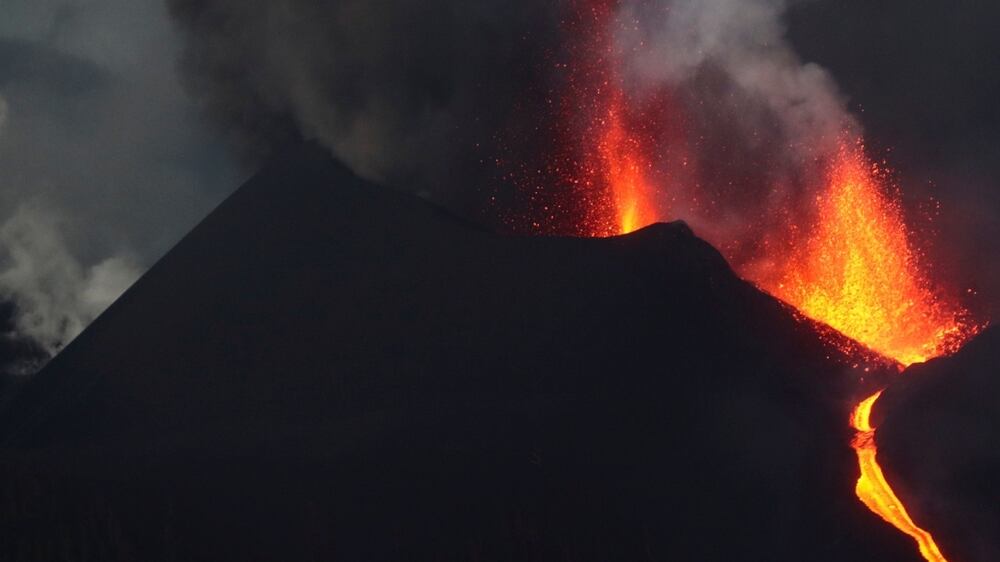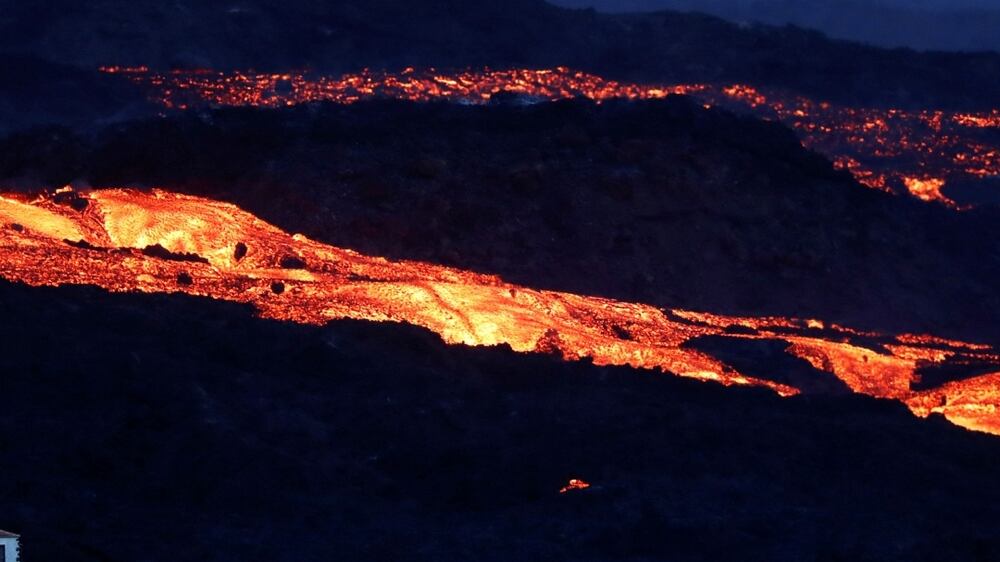Molten rock streamed downhill on Friday as a volcano continued to erupt on the Spanish island of La Palma, shooting sprays of lava and smoke into the air.
Authorities said on Thursday that hundreds of people were removed from the area during the night as a river of molten rock crept deeper into a coastal town during the protracted volcanic eruption.
Emergency services helped some 500 people leave their homes, Tazacorte mayor Juan Miguel Rodriguez said.
“There is already a certain degree of despondency and desperation, waiting for the volcano to subside,” he said.
About 7,500 people have been forced to flee since Cumbre Vieja began erupting more than a month ago.
Scientists say the eruption could go on for three months.
Experts are expecting the scale of damages to rise in the coming hours as the slow-moving mass of white-hot rock slides towards the island's western coast.
“It has slowed down a lot. It is now moving at 300 metres an hour, maybe less, because it is reaching a very flat area but it is gaining height,” said David Calvo of the Involcan volcanology institute.
“There are areas where it is already 15 metres thick.”
Lava from La Palma volcano reaches cement factory

Scientists from the Geological Survey of Spain, with the support of the Military Emergency Unit, said the surface of the molten rock measured 980ºC.
Most of the island’s 85,000 people have been unaffected by the eruption, but part of the western side has seen the lava ruin livelihoods and destroy homes.
Molten rock has covered over 866 hectares and crushed or damaged about 2,185 buildings.
The volcano’s constant roar and numerous earthquakes have also kept locals on edge.
The economy of La Palma, part of Spain’s Canary Islands, is based mainly on tourism and agriculture, primarily bananas.
The Spanish government has pledged millions of euros to help rebuild damaged infrastructure.







